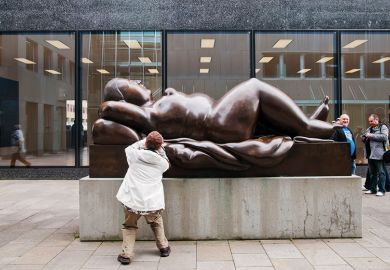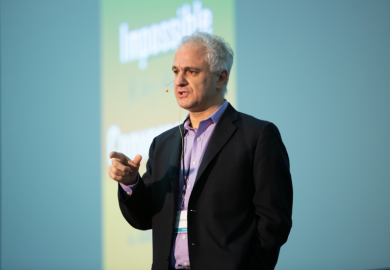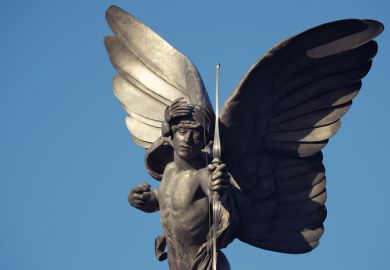These two books have virtually nothing in common except the front cover portrait of Nietzsche. Curtis Cate's formidable apologetic biography of Nietzsche is intended not for academic specialists but for "laymen" (Cate's term) "who may never have read a single book (of Nietzsche's)". This is not to say that this very readable book is not academically respectable, for it contains almost 100 pages of notes, an extensive bibliography, a detailed index and two sections of photographs and illustrations.
Philip Pothen's book, on the other hand, is directed at academics. In it, he explores views about artists and works of art developed by Nietzsche. This book will be best appreciated by those familiar not only with Nietzsche, but also with the secondary literature devoted to his work on art. (I might add, however, that in reading Pothen's book one can acquire a good sense of that secondary literature.) There are extensive endnotes for each chapter, as well as an appendix devoted to what he calls "French Nietzsches".
Nietzsche was born in 1844. As an infant, he lost his father, who was in his mid-30s, to "softening of the brain". The fear of a similar fate haunted him. At the age of 13 he began to have blinding headaches and nervous fits that were to plague him for the rest of his life. At their worst, they confined him to dark rooms for days on end. It is clear from Cate's account that his suffering was made worse by brutal and ineffective medical care, as well as by his reliance on various pills and potions to help him sleep.
At university in Bonn and Leipzig, Nietzsche so impressed his major professor that he was recommended for a professorship in philology at Basel University, despite having neither a doctorate nor a published book. It should also be noted that he was treated for syphilis in Leipzig, but there is no conclusive evidence as to whether he had the disease at that time or whether it contributed to his eventual mental collapse. It was during this period that he came under the influence of Arthur Schopenhauer and was inducted into Richard Wagner's inner circle. He broke with both of these early influences a few years later.
Nietzsche's books did not sell well in his lifetime, and he never attracted the "disciples" he felt he deserved. Lou Salome, his most promising disciple and also probably the subject of his only romantic infatuation, deserted him, taking with her one of his closest friends.
Despite ill health, Nietzsche's output was voluminous, and Cate does an admirable job of explaining some of the central ideas associated with Nietzsche: the will to power, "master" and "slave" moralities, the "overman" or "superman", and his opposition to religion in general and to Christianity in particular. Making good use of letters in addition to Nietzsche's published and unpublished work, Cate situates these doctrines within Nietzsche's life.
This is a long book, but the description of the frenzied pace of Nietzsche's final productive years propels one along. Sadly, the frenzy turned to collapse. Just before that final collapse early in 1889 - he was found hugging a horse that had been beaten and never recovered his senses - he wrote to the King of Italy proclaiming himself to be Caesar. He died about ten years later.
This was clearly a life fraught with tragedy, but perhaps most tragic of all is the misinterpretation and misappropriation of his works by fanatical groups of all kinds, most notably Nazis and anti-Semites. That his anti-Semitic sister played a large part in perpetrating these abuses of his ideas only deepens the tragedy. One of the photographs in the book shows her proudly clasping Hitler's hand.
This book also excels at confronting and contextualising the passages most often misinterpreted as Nietzsche's commitment to German nationalism and anti-Semitism, both of which he despised. Indeed, Wagner's commitment to these things probably played a large part in Nietzsche's break-up with him.
Cate also tries to make Nietzsche's arguments relevant to the problems of today. For example, Nietzsche's worries about the mediocrity resulting from "democratisation" seem even more poignant now.
This was also a life with many ironic episodes, and Nietzsche always retained the ability to laugh at himself. To take just one example cited by Cate, Nietzsche was anxiously awaiting the printing of Thus Spake Zarathustra , with its prominent theme that "God is dead", because he wanted to give copies as Easter presents. However, the printing was preempted because the printer had received a much larger rush order for 500,000 hymnals.
My one complaint concerns the selective history of philosophy provided as a backdrop. As Cate tells the tale, after Aristotle all was quiet until the revolutionary Descartes appeared. But this is to ignore the many contributions of thinkers who made Descartes possible. More worrying is Cate's dismissal, without argument, of empiricist and positivist philosophers. He describes Kant's importance to Nietzsche's development, but Kant himself describes a deep debt to Hume. And Cate notes Nietzsche's admiration of Darwin, while Darwin himself stands on the shoulders of the empiricists. (Of course, even in his admiration, Nietzsche argues that we must go further than a struggle for mere survival, aspiring to nobility and the will to power.) Nietzsche is not the sort of thinker to inspire consensus among critics, but at least with respect to Pothen's topic, Nietzsche on art, there is something like a "received view" - that art is, and should be, central to Nietzsche's conception of a "noble" life. Pothen wants to dispute this view. He criticises other authors - Heidegger most vociferously - for focusing solely on texts that favour the received view. As an example of Pothen's more expansive approach, in chapter one he appeals to unpublished texts and the 1886 preface Nietzsche wrote for a new edition of The Birth of Tragedy to counter the apparent celebrations of art and artists in that work. The book's central thesis seems to be that while Nietzsche celebrated artistic activity he was consistently suspicious of artistic artefacts, in part because, like religion, they distract us from this world.
One important alternative creative activity explored in chapter three is the notion of "monological" works of art - works that "eschew an audience".
But this, as Pothen acknowledges in the concluding chapter, leaves the content of creative activity quite mysterious. There is also a self-referential problem with this position of celebrating artistic activity but not the works themselves: Nietzsche's books are not simply philosophical arguments but are themselves works of art. It is not surprising, therefore, to find Pothen quoting Nietzsche's attempts, late in his life, to recall certain of his works.
Neither of these books is well suited for an introductory university course on Nietzsche. Pothen's book is just too technical, and I would prefer my students to struggle with Nietzsche rather than use Cate's account.
Paul Thomson is assistant professor of philosophy, John Carroll University, Cleveland, US.
Friedrich Nietzsche
Author - Curtis Cate
Publisher - Hutchinson Pimlico
Pages - 689
Price - £25.00 and £14.99
ISBN - 0 09 180162 1 and 0 7126 7303 2
Register to continue
Why register?
- Registration is free and only takes a moment
- Once registered, you can read 3 articles a month
- Sign up for our newsletter
Subscribe
Or subscribe for unlimited access to:
- Unlimited access to news, views, insights & reviews
- Digital editions
- Digital access to THE’s university and college rankings analysis
Already registered or a current subscriber? Login



